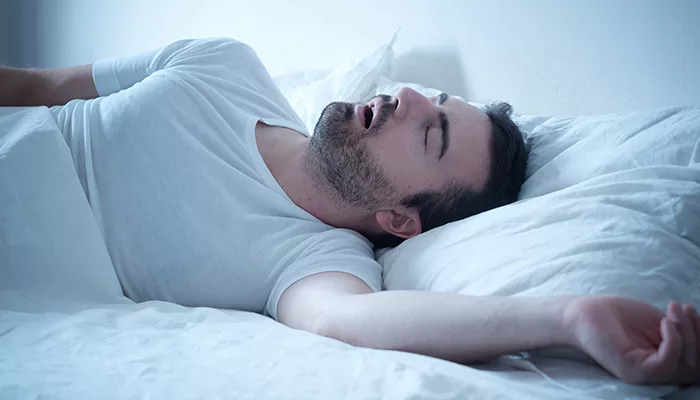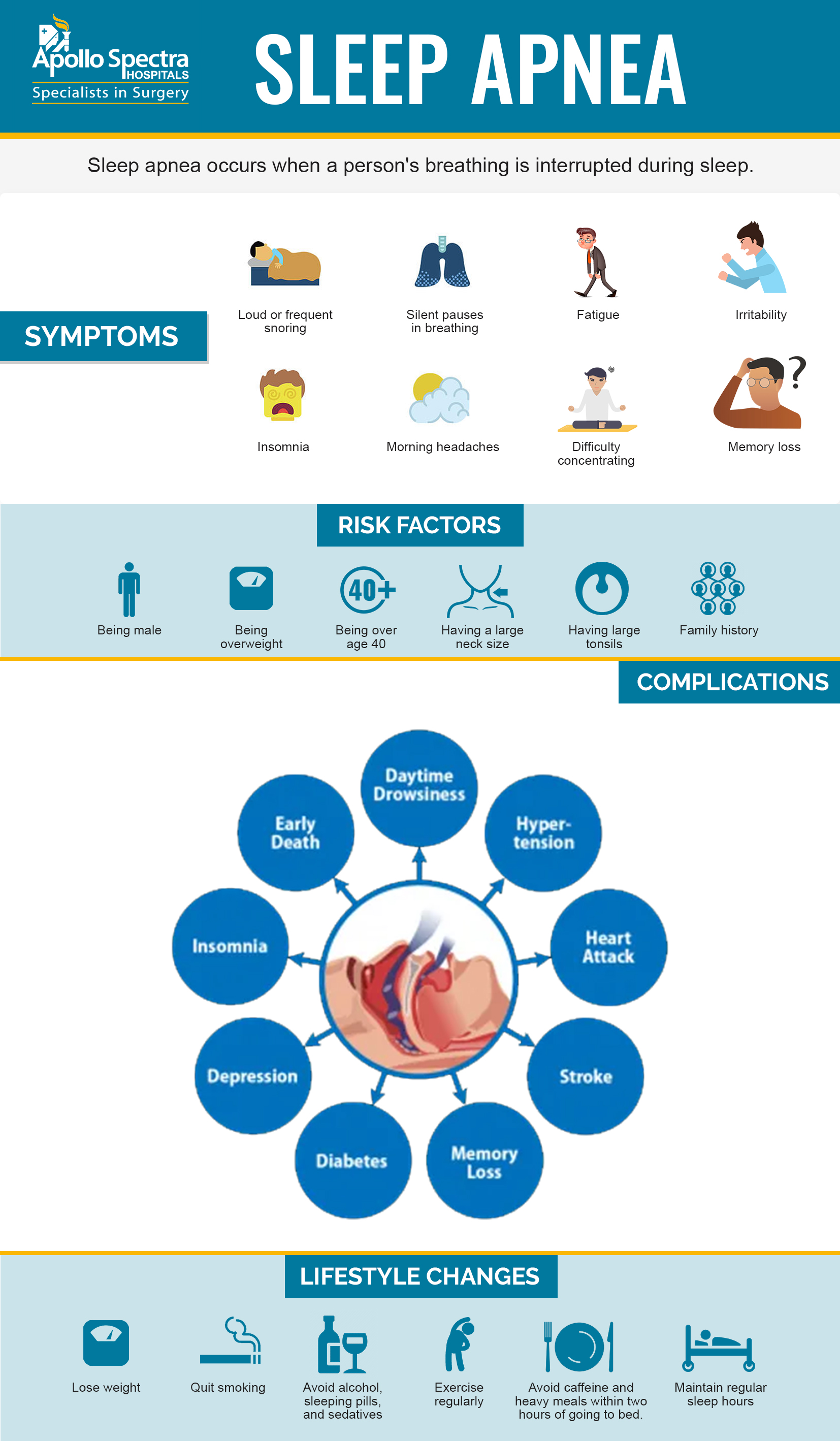What are risk factors associated with Sleep Apnea?
May 30, 2019
Sleep Apnea is a disorder in which during sleep, the breathing gets repeatedly interrupted for a large amount of time. This pause can last for about 10 seconds. This occurs when the muscles present in the back of the throat are not able to keep the airway open leading to failed efforts to breathe. In some cases, the brain is not able to control breathing during sleep. Sleep apnea can cause low oxygen levels in the blood and fragmented sleep which might lead to heart diseases, hypertension, and mood and memory problems.

Sleep Apnea Types
Sleep Apnea can be categorized into three types:
- Obstructive Sleep Apnea – The most common form developed due to the relaxation of throat muscles.
- Central Sleep Apnea – This occurs when the brain fails to control the breathing by not sending proper signals to the muscles.
- Complex Sleep Apnea Syndrome – This condition is developed when a person has both, obstructive and central sleep apnea.
Sleep Apnea Symptoms
Here are the most common signs and symptoms of obstructive and central sleep apnea:
- Morning headache
- Loud snoring
- Gasping for air during sleep
- Stop breathing during sleep
- Waking up with a dry mouth
- Insomnia
- Irritability
- Difficulty in paying attention
- Excessive daytime sleepiness known as Hypersomnia
If you have been loud snoring, it might mean that your condition has become a potentially serious issue.
Sleep Apnea Causes
- Obstructive Sleep Apnea - The muscles of the throat support the soft palate, side walls of the tongue and throat, uvula hanging from the soft palate, and the tonsils. When the muscles relax, as you breathe in, the airway closes or narrows. This lowers the oxygen level in the blood. Your brain is able to sense this and sends you a signal so that the airway can be opened. You are awake for such a brief time that you don’t even remember it. In some cases, you might gasp, snort, or choke. This is repeated about 5 to 30 times every hour making you unable to get that deep, restful phase of sleep.
- Central Sleep Apnea -This is the less common form of sleep apnea that occurs when the brain is unable to send signals to the breathing muscles. So, for a short amount of time, you make no efforts to breathe, resulting in awakening with shortness of breath, not able to sleep and staying asleep for a long time.
Risk Factors
Sleep apnea can affect anyone. But there are certain factors that put you at a higher chance of developing the condition than others:
-
For obstructive sleep apnea
- Being obese can cause fat deposits around the upper airway resulting in obstruction of breathing.
- People with a higher neck circumference or a thicker neck have narrow airways.
- You might have a narrow airway inherited by someone from your family.
- Males are more likely to develop the condition than females.
- Older adults are at a higher risk of developing this condition.
- Extensive use of alcohol, tranquilizers, and sedatives can worsen the apnea by relaxing the muscles in your throat.
- Smoking increases fluid retention and inflammation in the upper airway that puts you at a higher risk.
- Anatomical problems or allergies that cause difficulty breathing through the nose increase your chances of getting apnea.
-
Central Sleep Apnea
- Being male and older increases your chances of developing this condition.
- If you had congestive heart failure, you are at a higher risk of developing this condition.
- Opioid medications like methadone increase the risk.
- If you had a stroke, the risk of you developing the condition significantly increases.
Sleep Apnea Treatment
Sleep apnea results in decreased overall health and can result in life-threatening complications like depression, stroke and heart attack. So, treating sleep apnea must be your priority. There are some lifestyle modifications that you can incorporate in life to normalize breathing.
- Lose weight
- Quit smoking
- Avoid alcohol, sleeping pills, and sedatives
- Exercise regularly
- Avoid caffeine and heavy meals within two hours of going to bed.
- Maintain regular sleep hours
The other treatment options include:
- Continuous Positive Airway Pressure (CPAP) therapy - This helps the airway stay open by gently applying a stream of pressurized air through a mast.
- Surgery - There are many surgical procedures available that widen the airways.
- Mandibular Repositioning Device (MRD) - It is custom-made oral appliance that holds the jaw in a forward position allowing the upper airway to stay open.
NOTICE BOARD
CONTACT US
CONTACT US
 Book Appointment
Book Appointment


.svg)
.svg)
.svg)
.svg)








